Not long ago, Detroit’s Big Three waved goodbye to the mid-size truck segment as they phased out models such as the Colorado, Canyon, Dakota and Ranger,opting to focus on larger and more profitable full-size trucks instead and effectively leaving the mid-size segment to the Nissan Frontier and Toyota Tacoma.
As full-size trucks grew larger and more expensive, though, GM returned with a new Colorado and Canyon. The trucks were a success and that helped to spawn renewed interest in the segment by Ford and Fiat Chrysler Automobiles.
FCA’s latest (and perhaps most unexpected) entry is the 2020 Jeep Gladiator, which debuted at the Los Angeles Auto Show last year and went on sale in April. It’s the brand’s first pickup since the Comanche and was previewed way back in 2005 by the Gladiator concept.
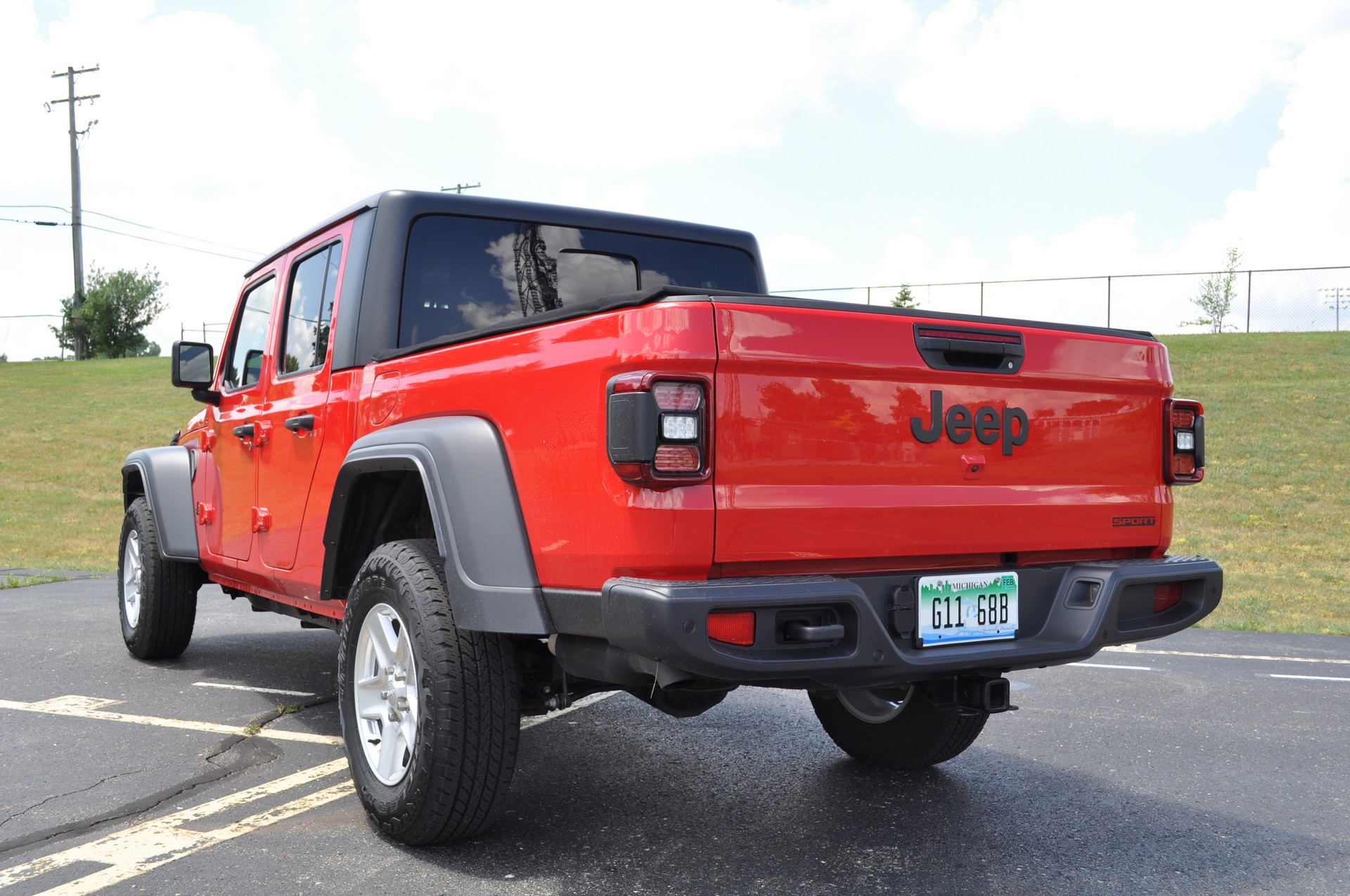
Wrangler Meets Pickup
Like the Scrambler before it, the Gladiator is heavily influenced by the brand’s hardcore off-roader – namely, the Wrangler. However, it’s not a straight up copy, as the truck has a seven-slot grille with wider openings to allow for increased air flow. The grille is flanked by circular headlights and pronounced fender flares. These design elements closely echo the Wrangler and so does the Gladiator’s crew cab body.
Of course, the biggest difference between the two models is the truck bed which measures 60.3 inches (1,531 mm) long and 56.8 inches (1,442 mm) wide. The bed isn’t huge, but it’s a practical addition which comes with a damped, power-locking tailgate. Speaking of the latter, the tailgate opens to reveal a 35.5 cubic foot (1,005 liter) bed with standard cargo lights.
Customers might want to get the spray-in bedliner, a $495 option that provides rugged and attractive protection. Other options include a $495 tonneau cover and an $895 Cargo Management Group with a Trail Rail system. The package adds a 115 volt outlet in the bed, an adjustable tie down system and an underseat rear storage bin.

Open Up And Say… Oh, That’s Noisy
Of course, the Gladiator’s defining feature is its removable roof. Our tester was equipped with the optional three-piece hardtop and, naturally, we wanted check out the open air experience. Removing the hardtop is surprisingly easy and the task makes CJ7 owners, like myself, a bit jealous. The two front panels are each held down at four points and they can be removed without any tools. The panels are relatively lightweight and can be taken off in a matter of minutes without any help. Driving with the panels removed feels like you’re in a pickup with a huge sunroof and it’s not a bad compromise if there’s no one around the help to remove the main hardtop.
Taking off the rear section requires more effort, as you’ll need to fold down the rear seats, remove a cloth cover and then disconnect a wiring harness. Once that’s done, it’s simply a matter of removing eight bolts with the included tool kit. Most are easy to get to and can be removed by hand after getting them started, but the two on the roof could be a reach for some people. Once all the bolts have been removed, grab a friend and lift the hardtop off the vehicle.
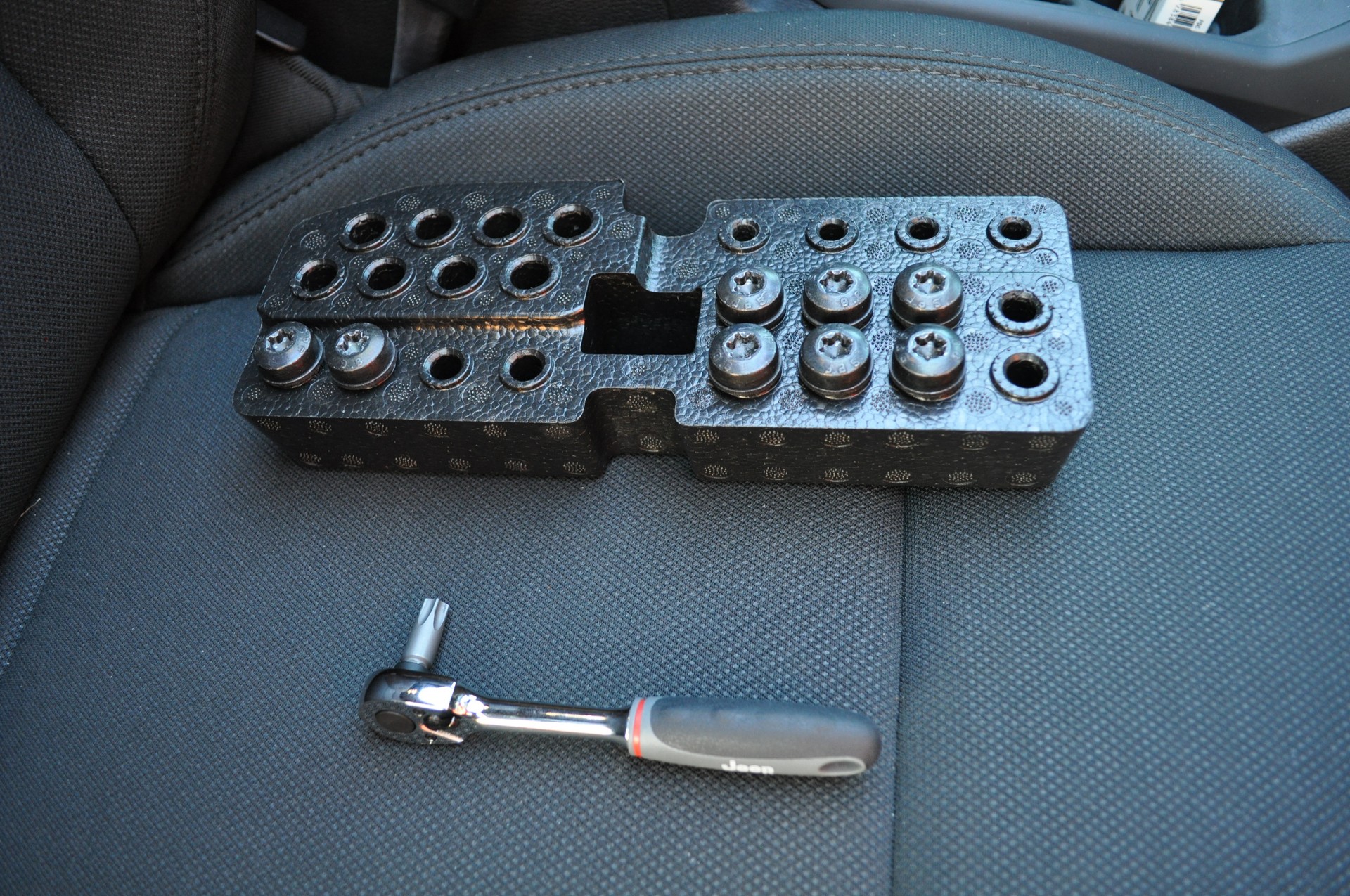
The whole process only takes about 10-15 minutes and everything is pretty straight forward. As an added bonus, the Gladiator even comes with a bolt carrying case is located underneath the rear seat. This sure beats storing the bolts in Ziploc bags and hoping you can find them when it’s time to reinstall the hardtop.
Driving around without the roof is an awesome experience and one that’ll surely put a smile on your face for the absurdity alone. That being said, it can get a bit noisy, so crank up the radio and enjoy. For the ultimate open air experience, the doors can be removed. The process is a bit more complicated as you’ll have to remove multiple bolts and disconnect four wires. The windshield can also be folded down, although we didn’t get that extreme during out test.

A Comfortable And (Mostly Good) Quality Interior
While the Wrangler has never been regarded as luxurious, the redesigned model certainly stepped up its game in terms of material quality and design. That also holds true for the Gladiator and drivers will find a nice cabin with metal accents and mostly premium plastics.
The model we drove was equipped with a stylish leather-wrapped steering wheel and a 7-inch digital display in the instrument cluster. The latter comes in handy, as it provides an assortment of information including a slightly gimmicky roll and pitch screen for off-roading. However, the most useful display is probably for the speedometer as the analogue gauge is a bit hard to read.
The center stack is topped by an infotainment system measuring, depending on the trim level, between 5- and 8.4-inches. Our tester was equipped with the 7-inch Uconnect 4 infotainment system, which is intuitive and easy to use. The screen feels a bit small and the system lacks GPS navigation, though on the plus side there’s Android Auto and Apple CarPlay connectivity.
Since our Gladiator lacked GPS, we used Android Auto on our highway loop. Thankfully, Jeep designers installed a “Media Hub” on the center stack which features a smartphone-friendly USB charging port. While Android Auto isn’t perfect, Jeep’s voice recognition technology works well and allows drivers to easily change radio stations without having to jump through hoops – one of big downsides of Android.
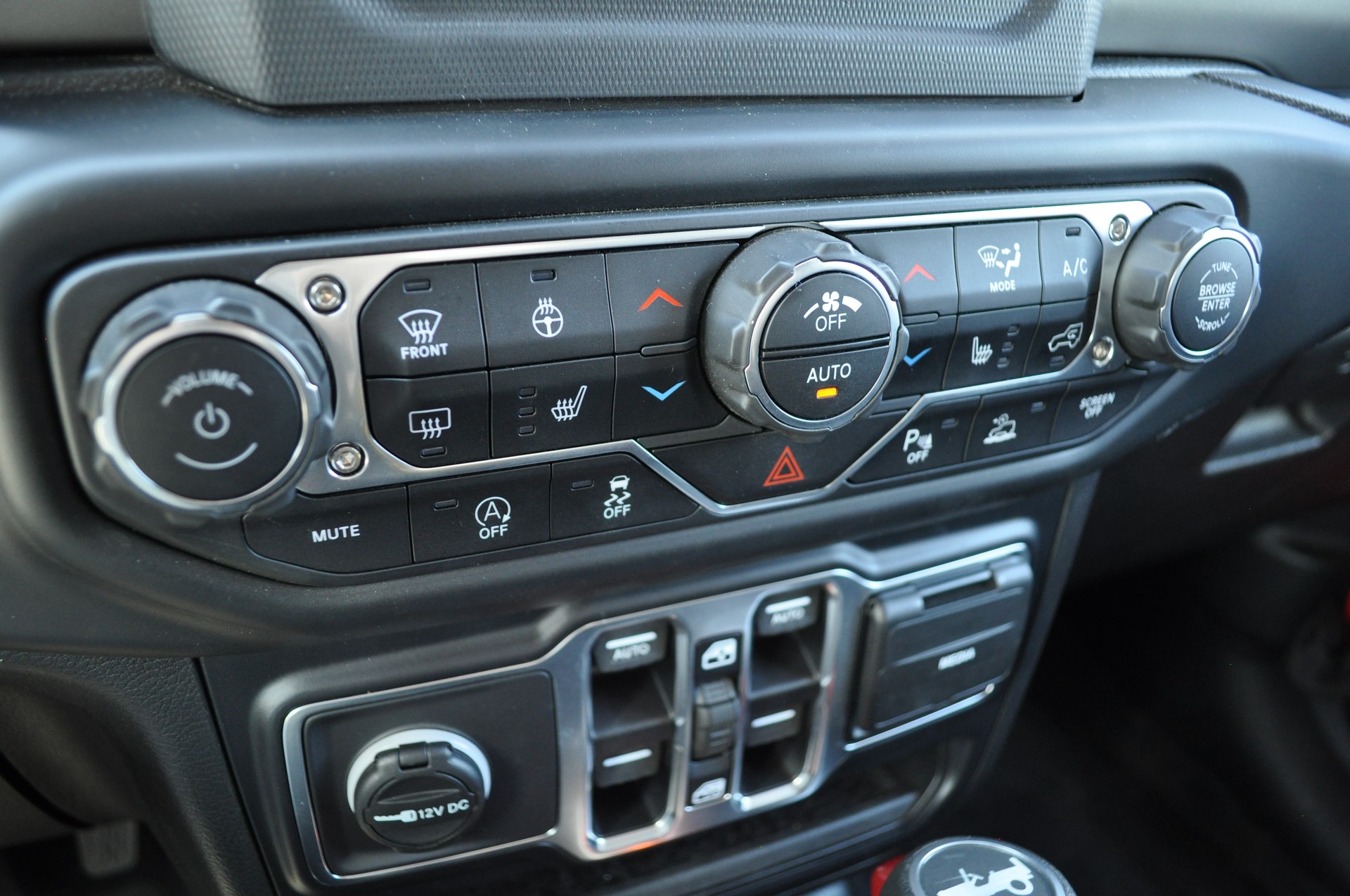
Below the infotainment system are high quality switch gear, rubberized knobs with metal accents and a small storage tray and controls for the optional power windows. Further back, there’s a stylish shifter for the available eight-speed automatic transmission and another for the Command-Trac four-wheel drive system. Last, but not least, there’s a short center console which opens to reveal a two-tiered storage compartment.
The Gladiator is only available in a crew cab configuration and rear seat passengers will find a spacious split folding bench which offers 38.3 inches (966 mm) of legroom. There is enough space to comfortably fit two adults, but the middle seat is best reserved for small children.
The standard cloth seats aren’t terribly exciting, but they’re comfortable and well bolstered up front. There’s pretty of room and it’s easy to get comfortable behind the wheel. The rear seats can be folded down to reveal two small storage compartments and a mesh pocket; they can also be folded up to reveal a storage bin which is relatively roomy and can hold small items such as tow straps and cargo tie downs.
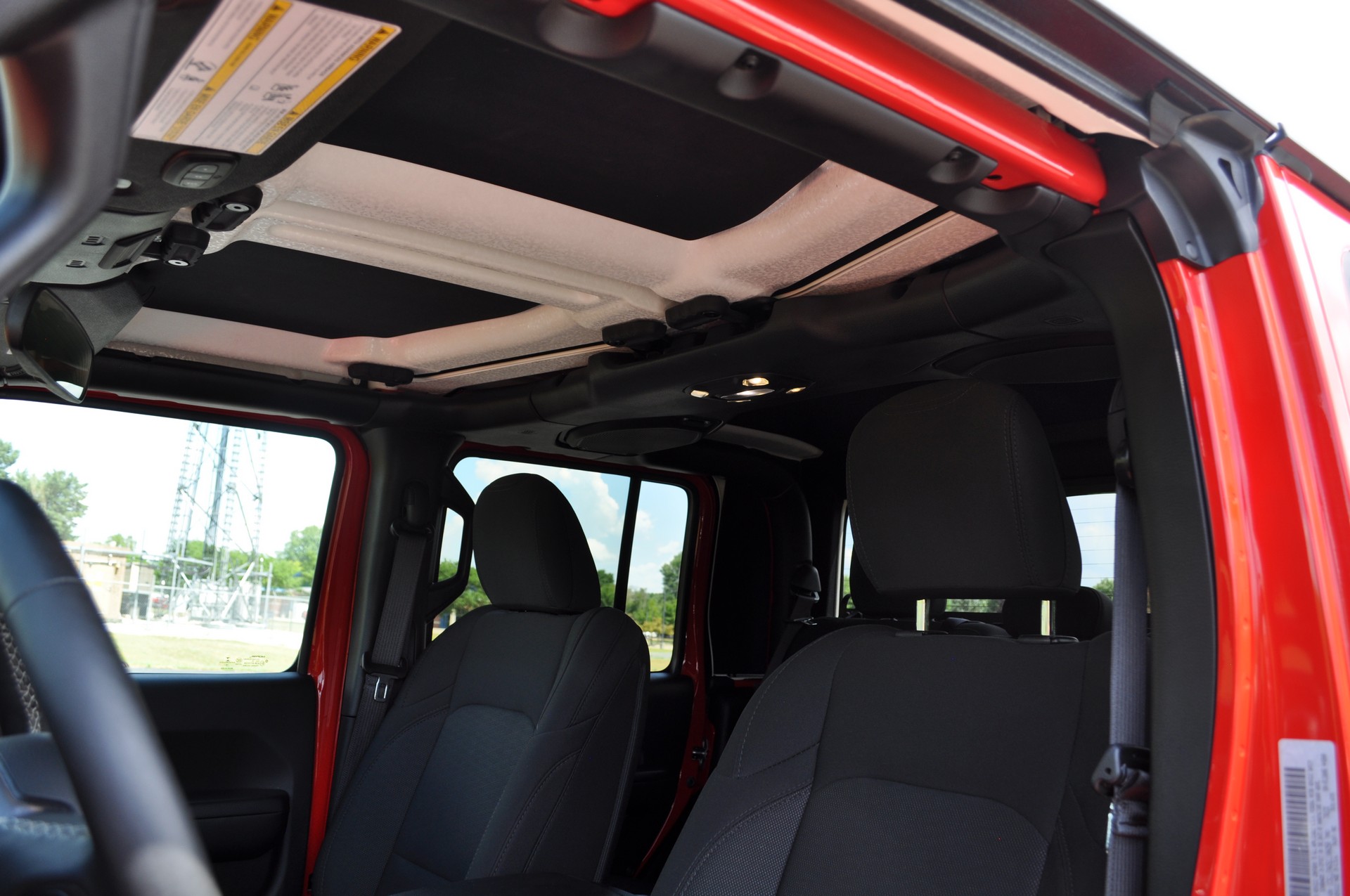
You Didn’t Expect Real Luxury, Did You?
While the interior has a lot going for it, there are some downsides which are largely due to the Gladiator’s open-top nature. The truck is surprisingly quiet around town, but it gets noisy at highway speeds. It’s not unbearable, but you’ll certainly want to crank up the radio to drown out the wind noise.
The top also has a squared off design which creates some pretty sizable blind spots in the corners. However, the Gladiator’s rearview camera, blind spot warning system, parking sensors and rear cross traffic alert system do a pretty good job of mitigating the issue.
Of course, the Gladiator’s interior also looks less than luxurious thanks to the partially finished nature of the hardtop, even when the optional $555 hardtop liner. The door panels are also a bit thin and this results in some rather cramped armrests.
These are understandable tradeoffs and we don’t think they’ll be too much of an issue with buyers. However, that’s really a matter of personal opinion.
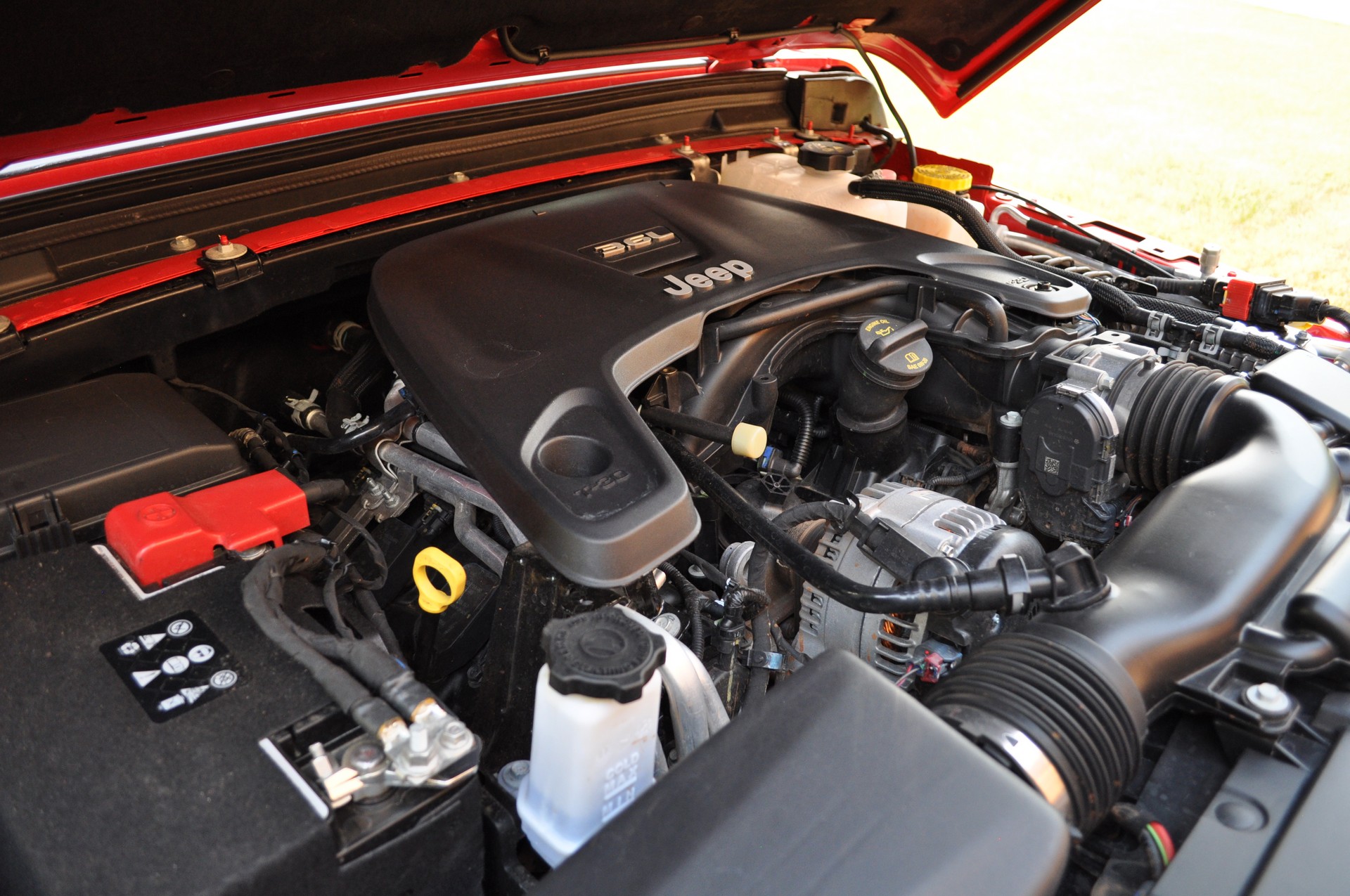
Familiar Engine, Impressive Performance
Like many FCA vehicles, the Gladiator is powered by a 3.6-liter Pentastar V6 engine that produces 285 hp (209 kW / 289 PS) and 260 lb-ft (353 Nm) of torque. It’s a good fit for the pickup as it provides plenty of power and always feels like it has more to give. That being said, drivers towing heavy loads might think differently.
While it’s not the most powerful engine in its class, it’s pretty competitive as the Ford Ranger is only available with a 2.3-liter EcoBoost four-cylinder that develops 270 hp (201 kW / 274 PS) and 310 lb-ft (420 Nm) of torque. On the V6 side, the Toyota Tacoma’s 3.5-liter engine produces 278 hp (207 kW / 282 PS) and 265 lb-ft (359 Nm) of torque. Likewise, the Nissan Frontier’s 4.0-liter V6 develops 261 hp (195 kW / 265 PS) and 281 lb-ft (381 Nm) of torque. The segment powerhouse is the Chevrolet Colorado and GMC Canyon which have a 3.6-liter V6 with 308 hp (230 kW / 312 PS) and 275 lb-ft (373 Nm) of torque.
The Gladiator’s engine is paired to a standard six-speed manual transmission, but an eight-speed automatic is also available. The latter gearbox feels like a cash grab as it’s a $2,000 option and isn’t smooth all of the time.Another issue is the engine stop/start system which is a tad on the loud side when it restarts. That being said, the system starts the engine nearly instantaneously and helps to improve fuel efficiency.
Speaking of which, the Gladiator has an EPA rating of 17 mpg city / 22 mpg highway / 19 mpg combined. That seems pretty realistic as we averaged 18.9 mpg during our week with the truck which saw a mix of highway and suburban driving. That’s about average for the class, but your mileage will obviously vary.
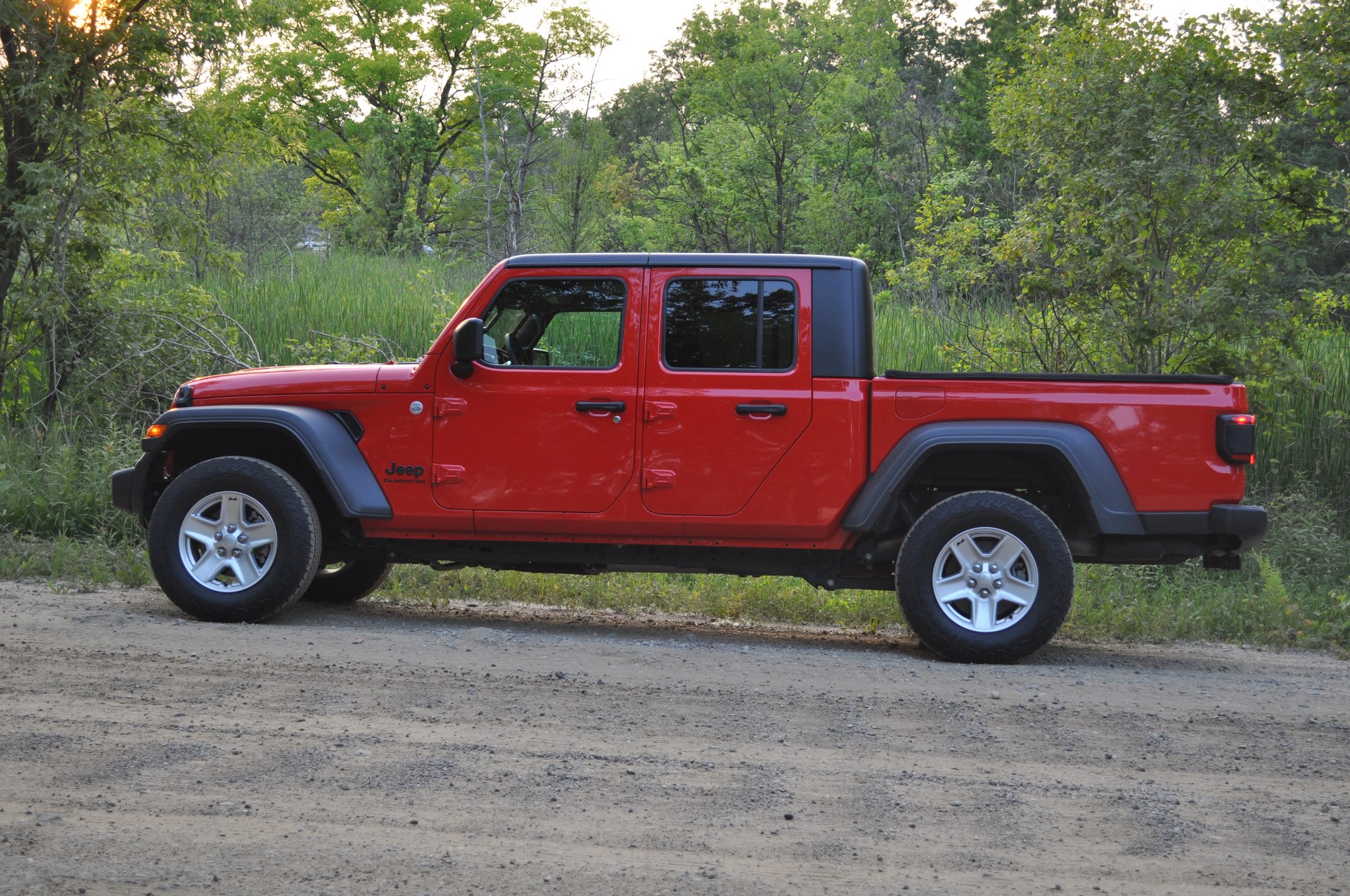
A Surprisingly Comfortable Ride
One of the most surprising things about the Gladiator is the ride quality. I wasn’t expecting much and my expectations were exceed as the truck delivers a fairly pleasant and comfortable ride. Issues rarely occurred but when they did, it was more likely due to Michigan’s disastrous roads than anything wrong with the Gladiator. Several of my passengers were also impressed with the ride quality and it’s a notable achievement for Jeep.
The ride on the highway is also smooth and comfortable, aside from the aforementioned wind noise. Thankfully, our Gladiator was equipped with an adaptive cruise control system that works great and made traveling on I-75 during a busy 4th of July weekend a relative breeze.
Driving dynamics are another issue as they’re pretty much what you would expect. The steering is light and predictable, but it’s not particularly engaging. The brakes feel strong, but there’s a bit of travel before their effort really ramps up.
Since the Gladiator is a mid-sized truck, it’s relatively easy to park and maneuver. Tight spaces can be a bit of an issue, but a multi-point turn should be enough to get you out of there.
It Gets Expensive Quick

The Gladiator starts at $33,545 before a destination charge of $1,495. That makes it more expensive than the Chevrolet Colorado Crew Cab 4×4 ($31,700 excluding a destination charge of $1,095) and the Ford Ranger SuperCrew ($30,860 excluding a destination charge of $1,195).
Despite this, the entry-level model is sparely equipped and is one of the few vehicles on the market with manual windows and door locks. The Gladiator Sport also has air conditioning, cloth seats, illuminated cup holders and a push button ignition. Other standard features include an eight speaker audio system and a Uconnect 3 infotainment system with a 5-inch display.
An assortment of options and trims are available, but they quickly boost the Gladiator’s sticker price into full-size truck territory. The eight-speed automatic is $2,000 while the three-piece hardtop is $1,195. The nearly mandatory spray-in bedliner adds $495, while packages such as the 7-inch Radio Group, Max Tow Package and Active Safety Group all cost nearly $1,000. As a result, it’s easy to spec out a Gladiator that costs nearly $50,000 – even without going too crazy on the options.
America’s Only Convertible Pickup
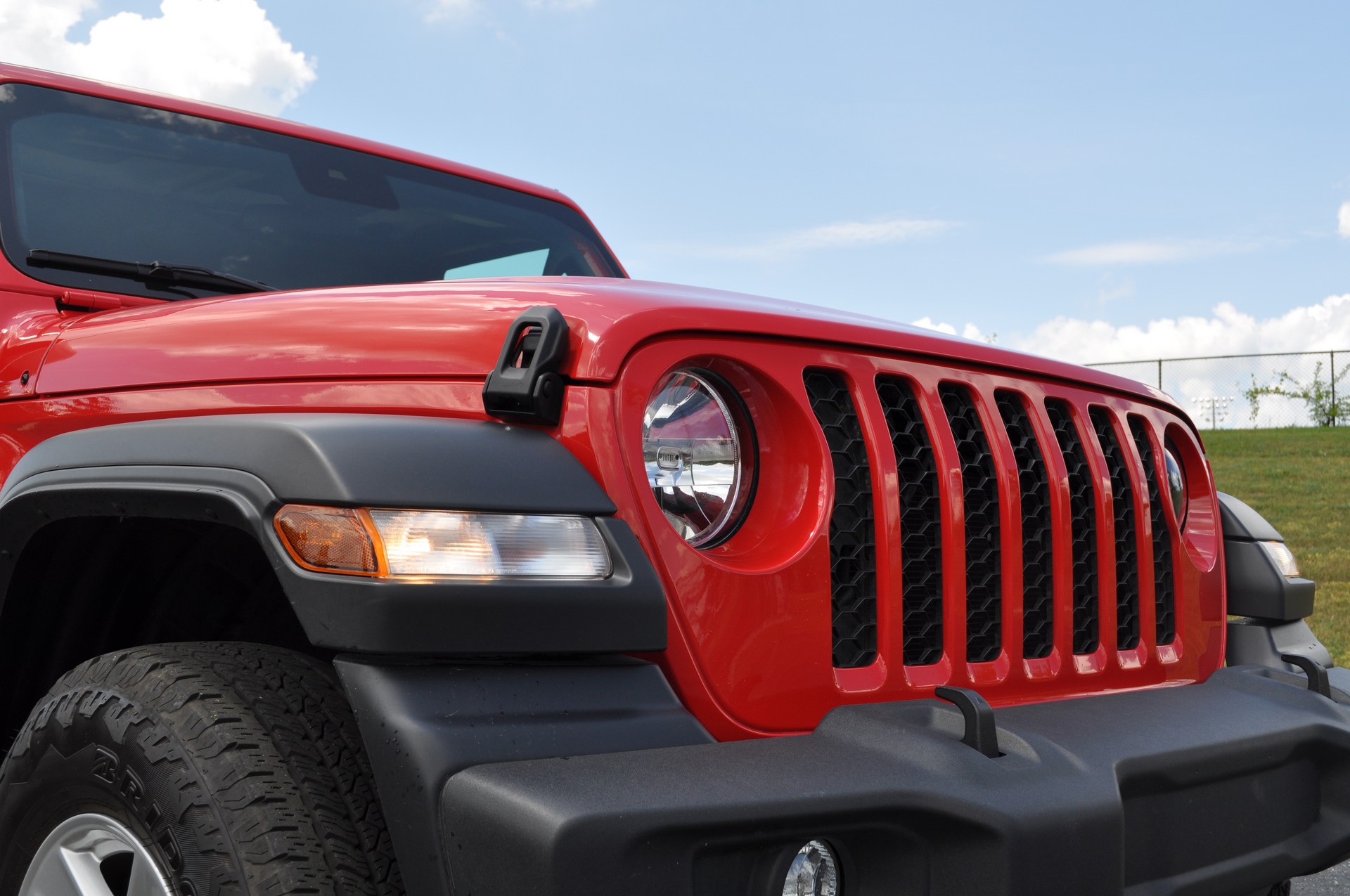
The Gladiator brings some personality to a rather bland segment. It has some quirks, but the trade-offs aren’t too bad and they’re understandable as the Gladiator is the only convertible pickup on the market.
More than that, the truck offers good acceleration, a comfortable ride and a spacious interior. Throw in Jeep’s renowned off-road capacity as well as a best-in-class towing and payload capacity, and the Gladiator should be more than enough to keep fans happy.
We’ll have more to say about the truck in the future as we’ll answer your questions and provide a few additional insights about our time with it.
Picture credits: Michael Gauthier for Carscoops
Car Scoops










Post A Comment: